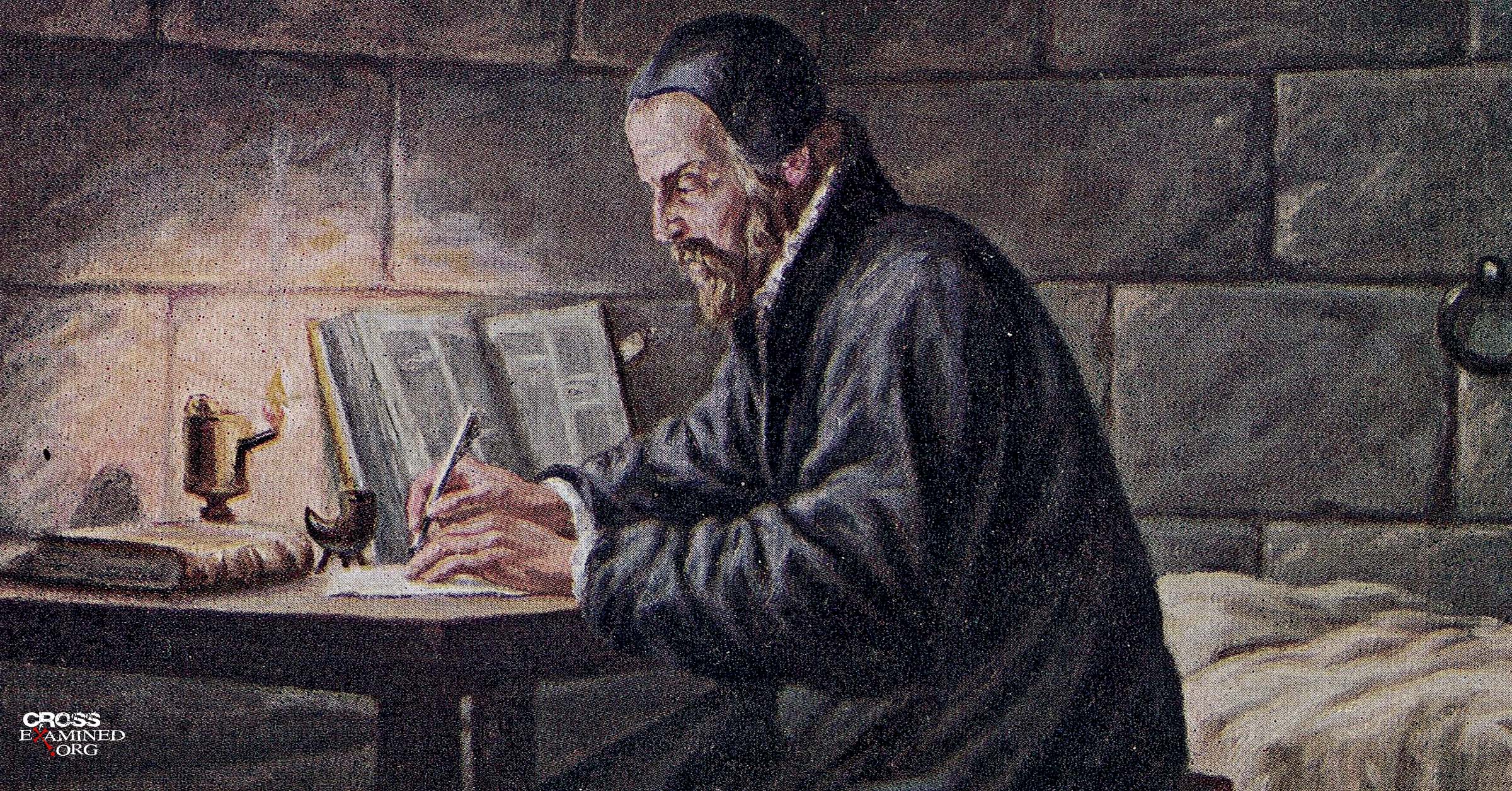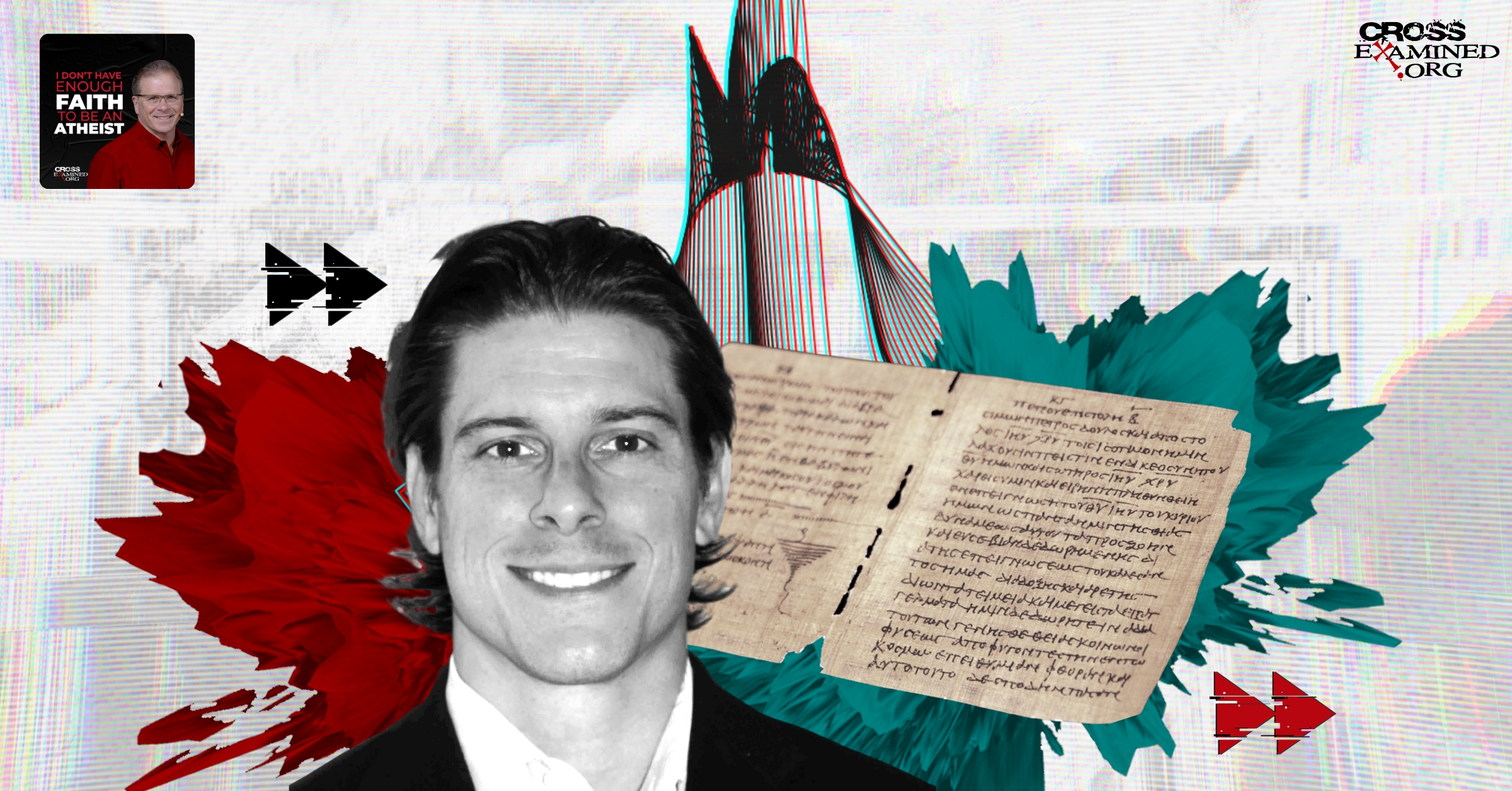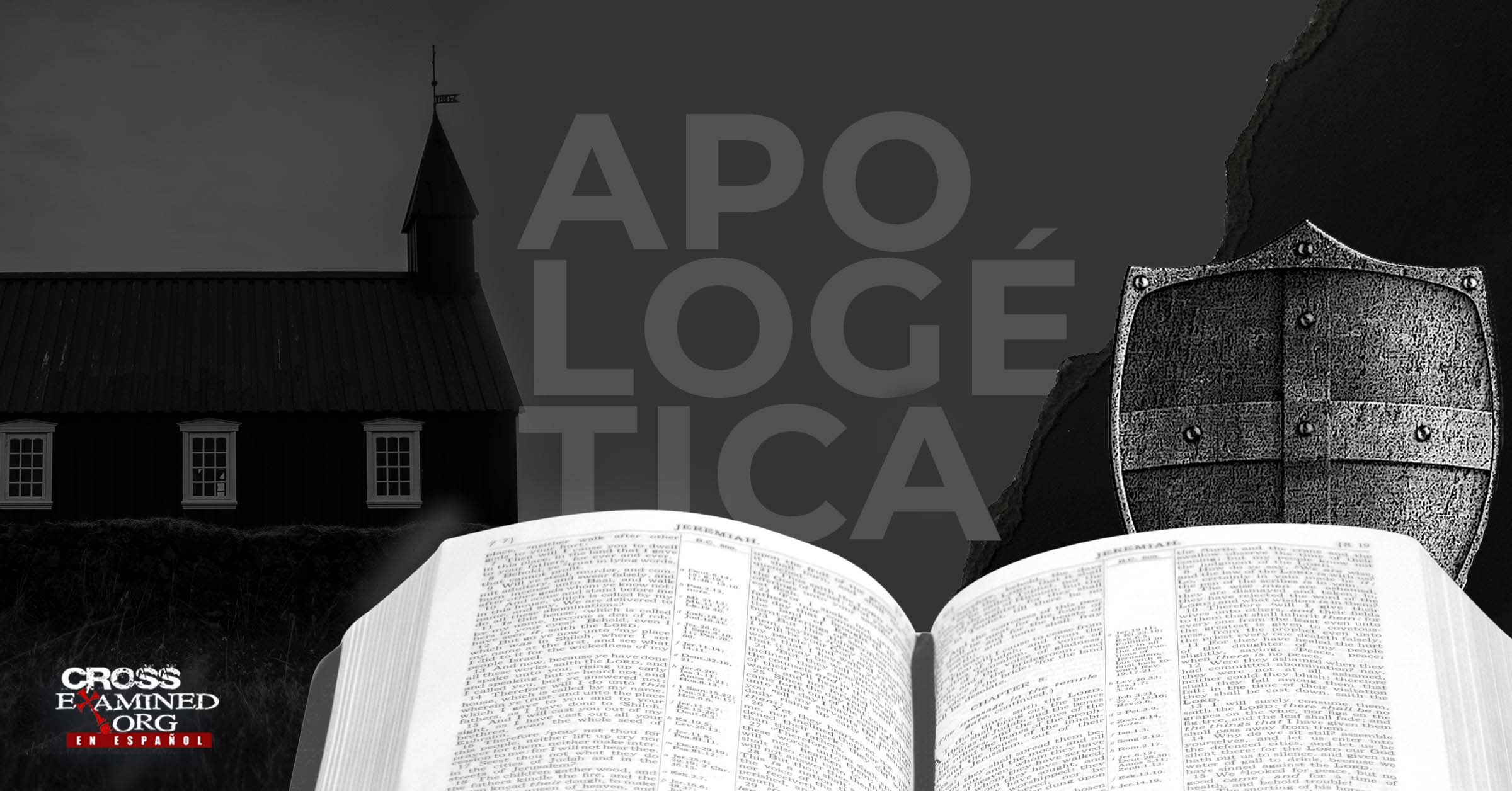How We Got Our Bible: History of the English Bible
In this post, we will consider the history of the English Bible. The Bible, after all, wasn’t written in English but in Hebrew, Aramaic, and Greek. In fact, English didn’t even exist when the Bible was written! So how did the Bible end up in our language? That’s what I hope to explain in this article
The Latin Bible
Since the start of the fifth century, the Latin Vulgate was the official Bible translation for the church in the West. The problem was that by the Middle Ages, almost nobody knew Latin, including much of the clergy! Large chunks of Scripture, therefore, had never been read nor heard. While some desired to translate the Bible into native languages, the church forbade this activity. Translating a Bible into a language other than the approved Latin version could land you in prison or the chopping block.
Keeping the laity away from Scripture was one of the problems which led to the Reformation. The Reformation doctrine of the priesthood of the believer would never stand for only clergy having access to Scripture. But even though the Reformation was still 150 years away, the Morningstar of the Reformation began to shine bright in the fourteenth century.
John Wycliffe
Wycliffe was a Reformer before there were Reformers. He believed that ultimate authority resided in the Bible, not the Pope. As one of the most brilliant scholars in England during his time, Wycliffe gathered quite a following. His followers were derogatorily known as “Lollards.” Wycliffe sent these lower-class preachers out to villages around England where they preached in English. Wycliffe noted, “Christ and his apostles taught the people in the language best known to them. . . . Therefore, the doctrine should be not only in Latin but also in the [common] tongue.” [1].
Following the influence of their leader, the Lollards translated the Bible from the Latin into English in 1382. Each Wycliffe Bible was copied by hand since the printing press would not be invented by Gutenberg for another seventy years. As you can imagine, the ecclesiastical powers frowned upon the Lollard’s work. The archbishop of Canterbury remarked, “That pestilent and most wretched John Wycliffe, of damnable memory, a child of the old devil, and himself a child or pupil of Antichrist . . . crowned his wickedness by translating the Scriptures into the mother tongue.” [2].
One detractor even complained, “Christ gave his Gospel to the clergy and the learned doctors of the Church so that they might give it to the laypeople. . . . But this Master John Wycliffe translated the Gospel from Latin into the English. . . . And Wycliffe, by thus translating the bible, made it . . . common to all, . . . even to women!”[3].
Lollards were repeatedly burned at the stake with their Bibles tied around their necks. Wycliffe, however, was able to escape the death penalty because of friends in high places. In 1384, however, he suffered a stroke while taking the Lord’s Supper. He died a few days later.
Thirty years later, in 1415, the Council of Constance condemned Wycliffe and his Bible. So they dug up his corpse, burned his remains, and threw his ashes in the River Swift.
Erasmus and the Greek New Testament
The Lollards translated from the Latin into English because hardly anybody knew Greek in the Western world at the time. All of that changed, however, in the fifteenth century when the Muslim Ottomans conquered the Eastern Roman Empire. As a result, Greek scholars migrated west and brought their Greek with them. This led to a renaissance of interest in the ancient languages. Within just a few short years, universities started offering Greek.
One person who was especially interested in learning Greek was a young Dutch scholar named Desiderius Erasmus. He is famously quoted as saying, “I have turned my entire attention to Greek. The first thing I shall do, as soon as money arrives, is to buy some Greek authors; after that, I shall buy clothes.”[4].
In 1516, he became the first person to publish a critical edition of the Greek New Testament. Erasmus used about ten Greek manuscripts, all which dated to the medieval period. Until this time, the Greek New Testament only survived in hand-copied manuscripts that were often incomplete. Since Gutenburg had previously invented the printing press sixty years earlier, Erasmus was able to produce an entire Greek New Testament and distribute thousands of copies.
Biblical scholars refer to Erasmus’ critical New Testament as the Textus Receptus (“the received text”). His multiple editions became the basis for the King James Bible.
William Tyndale
Shortly after Erasmus’ Greek New Testament was published, a young scholar named William Tyndale requested a reversal to the policy against English Bible translations. His request was denied. Certainly, if someone was ever going to translate the Bible into English from the original languages, Tyndale was the guy. He trained at both Oxford and Cambridge and was fluent in 6-7 languages. Yet, his peers did not share his same passion. One such priest chided Tyndale’s desire to get God’s word to the people. He went so far as to say that it was more important for the people to know the Pope’s decrees than God’s. Tyndale responded, “If God spares my life, I will cause a boy that driveth the plow to know more of the Scripture than you do.” [5]. Tyndale would eventually succeed.
Yet, Tyndale had to flee England for Reformation-friendly Germany where he could translate in safety. In 1526, Tyndale finished translating the Greek New Testament into English. This was the first English Bible based off the original languages. A German printer produced 6,000 copies. These Bibles were smuggled into England inside boxes of wine and sacks of flour and sold on the black market. English bishops bought as many copies as they could, often at inflated prices, just so they could burn them. Tyndale wasn’t bothered by their actions. He used the added proceeds to update and improve his New Testament.
Tyndale’s Bible underwent several updates. His third edition of 1534 is the most significant. He is also responsible for shaping much of the English language. Linguists argue that Tyndale and William Shakespeare shaped the English language more than anyone else. Tyndale introduced new words such as “fisherman, seashore, scapegoat, beautiful, and peacemaker.”
Henry VIII
Even though Henry VIII led England out of the Roman Catholic Church, he still did not approve of Tyndale’s Bible. The reason? Because Tyndale wrote a tract condemning Henry’s unlawful divorce of his wife Catherine so he could marry Anne Boleyn. The year after this tract, Henry issued an edict, “the translation of Scripture corrupted by William Tyndale . . . should be utterly expelled, rejected, and put away.”[6].
In 1535, the English bribed Henry Philips to betray Tyndale over to the authorities. Philips succeeded and Tyndale was thrown into prison for over a year. While in prison, he determined to translate the Old Testament from the Hebrew. He never finished. In 1536, he was tied to a post, strangled to death, and burned. His final words that he cried out for all the bystanders to hear were, “Lord! Open the king of England’s eyes!”[7].
Tyndale’s prayer was answered. Around that time, Henry VIII approved the Matthew’s Version of the Bible. “Matthew” was a pseudonym for Tyndale’s friend John Rogers. In fact, the letters “WT” were printed between the Old and New Testaments as a covert tribute to William Tyndale.
English Bibles Before KJV
After the first English translation was approved, several immediately followed:
The Coverdale Bible
In 1535, Miles Coverdale (Tyndale’s assistant) produced a complete Bible. This became the first complete Bible printed in English. That said, he didn’t translate directly from the original languages. He used Tyndale’s text, the Latin, and even Luther’s German Bible.
The Matthew’s Bible
In 1537, John Rogers—whose pen name was Thomas Matthew—brought together Tyndale’s published and unpublished translations along with Coverdale’s translation of the prophets and apocrypha. Rogers added over 2,000 notes to his translation. His Bible is sometimes called the “Wife-Beater’s Bible” because a marginal note at 1 Peter 3:7 reads, “If the wife be not obedient and helpful to her husband, he should endeavor to beat the fear of God into her.” Ironically, Rogers became the first martyr to be burned at the stake during Bloody Mary’s reign in 1555. I guess she read the footnote.
The Great Bible
In 1538, the king ordered that an English Bible be placed in every church. And not just any Bible, but the biggest Bible available. Therefore, the Church commissioned Coverdale to publish a new Bible that was even larger than the Matthew’s Bible. Thus, it was called the “Great Bible,” not because of its quality but because of its size. This Bible was based largely on Matthew’s Bible. It was different in two ways though. First, it was larger. And second, it left out all the marginal notes.
The Geneva Bible
During the reign of Bloody Mary, many Protestants fled for the mainland. One landing spot was the Reformation hub Geneva—home of John Calvin. Here, Reformers produced a new translation of the Bible in 1560. This Bible quickly became the most popular English Bible among Protestants—Puritans in particular because of the Calvinistic marginal notes. This was the first Bible translated entirely from the Greek and Hebrew and by a committee. That said, its New Testament relied heavily on Tyndale. It was also the first Bible with verse divisions.
The Bishop’s Bible
Based on the success of the Geneva Bible, the English clergy needed to create a new Bible devoid of Calvin’s influence that could be used in the churches. In 1568, the Church created the Bishop’s Bible. Even though it was used in the pulpits, it was wildly unpopular. It never caught on due to its wooden translation.
The King James Bible
In 1603, King James VI of Scotland became King James I of England. Shortly after his installment, a petition signed by a thousand Puritan pastors led to a conference at Hampton Court in 1604. The king summoned church leaders from all across England to discuss crucial ecclesiastical matters. The most important issue discussed was the desire for a single English translation to be used in the churches—and one without any marginal notes. At the time, the Bishop’s Bible was unpopular, while the unofficial Geneva Bible was used by the masses.
King James was uncomfortable with the Geneva Bible for a couple of reasons. First, he disliked the Calvinistic notes. And second, he disliked that some notes called into question the absolute power of his kingdom. One marginal note justified the Hebrew midwives’ disobedience of Pharaoh’s decree.
In 1611, James commissioned forty-seven scholars to translate a new English Bible. The KJV translators relied heavily on Erasmus’ third edition of the Greek New Testament. After several revisions, the KJV translators ended up copying about 90% of Tyndale’s English New Testament. They also drew heavily from the Geneva Bible’s Old Testament. They even follow the Rheims-Douai translation which was taken from the Latin Vulgate in a hundred places! In other words, the KJV was not brand new translation, but a revision of earlier works.
The KJV endured several revisions and alterations. In fact, about 100,000 changes were made from the original 1611 text to the current version which was completed in 1769—most of which were spelling changes.
Notable KJV Flubs
After the publication of the KJV, it went through several printings. On occasion, printer’s errors occurred, many of which are quite comical. Here are a few:
The Party Bible
A 1716 version has Jesus say in John 5:14 “sin on more” instead of “sin no more.”
The Vinegar Bible
A 1717 version includes the heading “The Parable of the Vinegar” instead of “The Parable of the Vineyard.”
The Murderer’s Bible
A 1795 version has Jesus saying “Let the children first be killed” instead of “Let the children first be filled.”
The Fashion Bible
A 1964 version has Paul saying that “women should adorn themselves with modern apparel” instead of “women should adorn themselves with modest apparel.”
The Unrighteous Bible
A 1653 version has Paul saying that “the unrighteous will inherit the kingdom of God” instead of “the unrighteous will not inherit the kingdom of God.”
The Wicked Bible
This Bible is the most notorious of them all. A 1631 version has the seventh commandment saying “thou shalt commit adultery” instead of “thou shalt not commit adultery.” After this printing went out, the archbishop ordered that all copies be burned and he fined the printer three hundred pounds. The printer died in debtors’ prison.
Footnotes
[1] Dyson Hague, The Life and Work of John Wycliffe, 94
[2] Dove, The First English Bible, 6; Matthew Spinka, John Hus’ Concept of the Church, 296-297.
[3] Timothy Paul Jones, How We Got the Bible, 130
[4] Desiderius Erasmus, The Correspondence of Erasmus: Letters 1 to 141, 1484-1500, 252.
[5] John Foxe, The Book of Martyrs, 1857, 258-259.
[6] Andrew Edgar, The Bibles of London, 59-60.
[7] John Foxe, The Book of Martyrs, 264.
Recommended resources related to the topic:
How to Interpret Your Bible by Dr. Frank Turek DVD Complete Series, INSTRUCTOR Study Guide, and STUDENT Study Guide
Oh, Why Didn’t I Say That? Is the Bible Historically Reliable? by Dr. Frank Turek DVD, Mp4, Mp3 Download.
_____________________________________________________________________________________________________________________________________________________
Ryan Leasure holds a Master of Arts from Furman University and a Masters of Divinity from the Southern Baptist Theological Seminary. Currently, he’s a Doctor of Ministry candidate at the Southern Baptist Theological Seminary. He also serves as a pastor at Grace Bible Church in Moore, SC.











